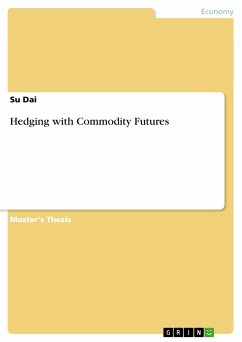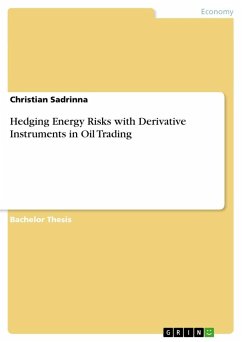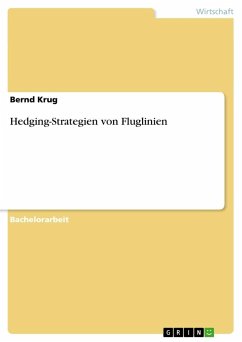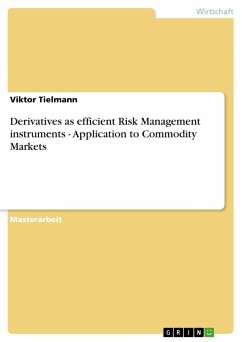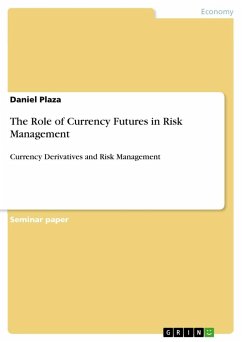Master's Thesis from the year 2013 in the subject Business economics - Banking, Stock Exchanges, Insurance, Accounting, grade: 1,7, University of Mannheim, language: English, abstract: The commodity futures contract is an agreement to deliver a specific amount of commodity at a future time . There are usually choices of deliverable grades, delivery locations and delivery dates. Hedging belongs to one of the fundamental functions of futures market. Futures can be used to help producers and buyers protect themselves from price risk arising from many factors. For instance, in crude oil commodities, price risk occurs due to disrupted oil supply as a consequence of political issues, increasing of demand in emerging markets, turnaround in energy policy from the fossil fuel to the solar and efficient energy, etc. By hedging with futures, producers and users can set the prices they will receive or pay within a fixed range. A hedger takes a short position if he/she sells futures contracts while owning the underlying commodity to be delivered; a long position if he/she purchases futures contracts. The commonly known basis is defined as the difference between the futures and spot prices, which is mostly time-varying and mean-reverting. Due to such basis risk, a naïve hedging (equal and opposite) is unlikely to be effective. With the popularity of commodity futures, how to determine and implement the optimal hedging strategy has become an important issue in the field of risk management. Hedging strategies have been intensively studied since the 1960s. One of the most popular approaches to hedging is to quantify risk as variance, known as minimum-variance (MV) hedging. This hedging strategy is based on Markowitz portfolio theory, resting on the result that "a weighted portfolio of two assets will have a variance lower than the weighted average variance of the two individual assets, as long as the two assets are not perfectly and positively correlated." MV strategy is quite well accepted, however, it ignores the expected return of the hedged portfolio and the risk preference of investors. Other hedging models with different objective functions have been studied intensively in hedging literature. Due to the conceptual simplicity, the value at risk (VaR) and conditional value at risk (C)VaR have been adopted as the hedging risk objective function. [...]
Hinweis: Dieser Artikel kann nur an eine deutsche Lieferadresse ausgeliefert werden.
Hinweis: Dieser Artikel kann nur an eine deutsche Lieferadresse ausgeliefert werden.

